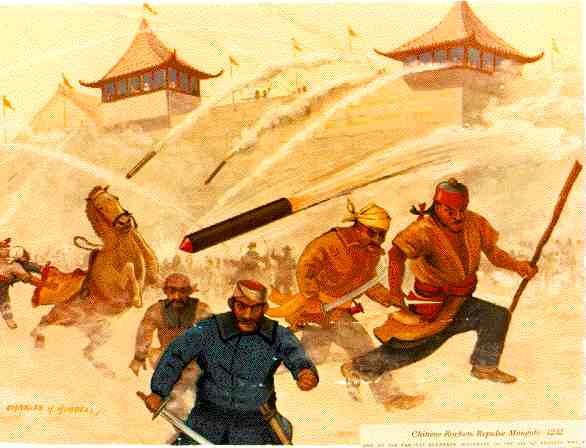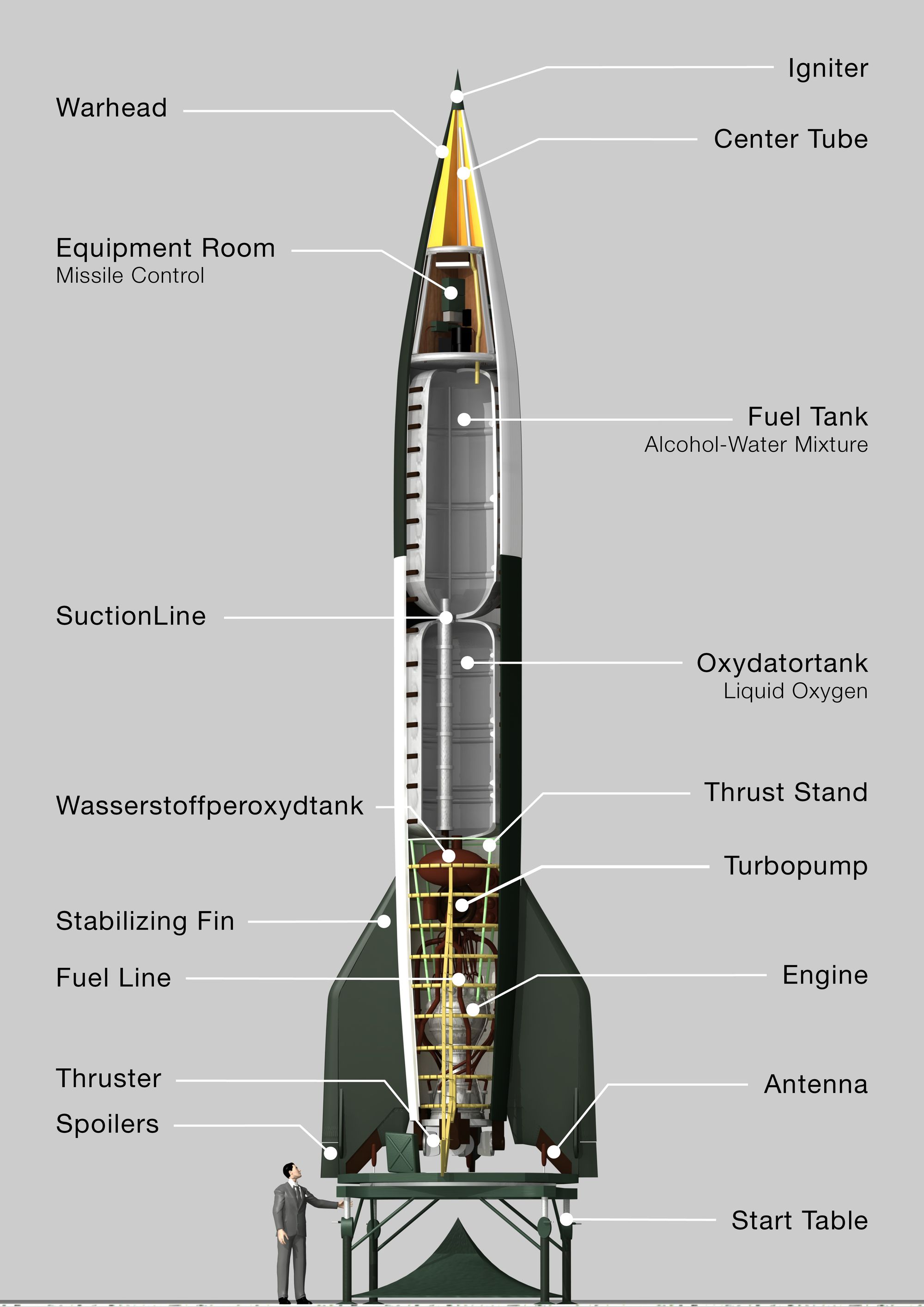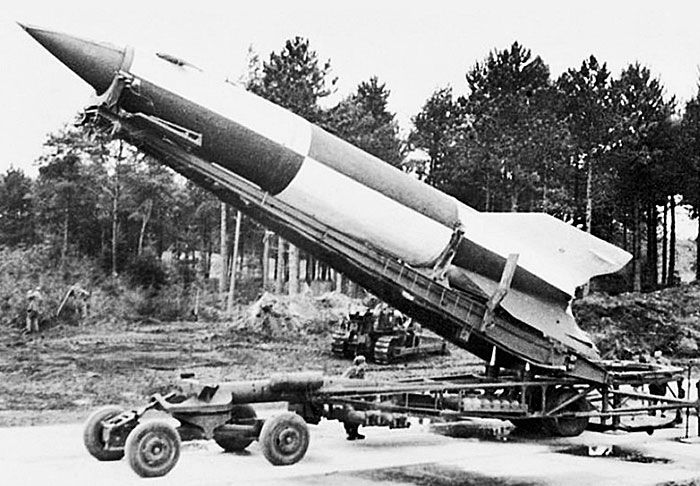An Over-simplified Tour of Rocketry Beginnings

In part I, we traced satellites from its science fiction beginnings to technical feasibility. All that was missing was a way to get into orbit (and how to pay for it).
The precursor to rocketry can be traced all the way back to ancient China in 300BC, in the form of gunpowder. Its discovery is not well documented, but the first recorded use of the earliest form of solid rocket fuel was in religious ceremonies. In a tradition that continues to this day, bamboo tubes filled with gunpowder were cast into ceremonial fires to produce a deafening racket, in hopes of warding off evil spirits.
The zero to one leap from gunpowder to rocket weaponry took roughly 1300 years. In contrast, the globalization of this new technology took only 200 years to reach Europe. The Sung Dynasty first developed the military use of gunpowder and rockets as early as 1045 AD against the invading Mongols, who then adopted its use against the Maygars (Hungarians) in 1241 AD, and the Arabs in 1258 AD. By 1300 AD, rockets would find its way into most European arsenals, but used only in fits and starts. Napoleon notably chose not to use rockets in favor of cannons, despite the French army’s prior use of rockets against the English during the Hundred Years War in 1429. Until WWII, military interest in the technology was lukewarm at best.
To take the next technological step, Konstantin Tsiolkovsky and Robert Goddard independently came to the conclusion that a more powerful liquid-propellant motor was needed. Not for military purposes, but to realize their dreams of living on other worlds. Tsiolkovsky, the Soviet rocket scientist who was inspired by the works of Jules Verne, demonstrated the feasibility of multi-stage liquid-fueled rockets to reach orbit in 1897. Goddard, who was transfixed by H. G. Wells’ The War of the Worlds at age 16, would go on to design and launch the first liquid-fueled rocket in 1926. The rocket, dubbed “Nell,” rose just 41 feet during a 2.5s flight, but it was an important milestone that demonstrated the feasibility of liquid-propellants for much larger rockets.

The significance of Goddard’s breakthrough was not appreciated by the U.S. government. The Weather Bureau did register interest in 1929 to conduct atmospheric research, but was unable to secure sufficient government funding. Across the Atlantic, Germany saw what the U.S. did not. In what is now a remarkable feat of prescience, Goddard was well aware of German interest, and expressed his concerns in a letter to the Smithsonian in 1923—three years before Nell. In it, he stated that he “would not be surprised if the research would become something in the nature of a race.” He didn’t predict the right opponent, but he certainly nailed the race that eventuated.
In Germany, rocketry started out as an amateur movement. The Verein für Raumschiffahrt (“VfR” the Society for Space Travel) was founded in 1927 following the popularity of Herman Oberth’s The Rocket into Planetary Space (1923). The society conducted their first successful test firing with liquid fuel in January 1930, and sought out the German army for funding later that year. Rocketry, it turns out, was not restricted by the Treaty of Versailles that brought WWI to a close. 1930 also happened to be the same year that a young mechanical engineering student by the name of Werner von Braun joined the VfR.
By 1932, the newly created German Army rocket research group took a serious interest in VfR, and von Braun in particular. Von Braun was subsequently recruited to work on liquid-propelled rockets for the army, taking most of the VfR with him. Prior to 1939, German scientists posed a number of technical questions to Goddard. His answers, in addition to his plans from various journals were incorporated by von Braun to build the Aggregat (A) series of rockets. The fourth iteration of which—given the technical name A4—would go on to wreck havoc in Western Europe as the V-2 “Vengeance” missile. As the first successful ballistic rocket and the first artificial object to travel into space (by crossing the Karman line), some historians fairly mark this occasion as the beginning of the space age.



The V2s entered the fray in 1944—too late to impact the outcome of the war. As Nazi Germany started to collapse in 1945, von Braun and his staff decided it preferable to surrender to the Americans instead of the Soviets or the British, especially after the damage they’d recently inflicted on London. Choosing from a half-dozen conflicting orders, von Braun and 500 of his staff made their way toward American lines under the order of relocation, while using his status as an S.S. officer to avoid being detained. On May 2, the same day that Berlin fell, von Braun’s brother, Magnus, accosted—on a bicycle—the first American soldier he could find to arrange their surrender. The Americans were well aware of the significance of the catch: von Braun was atop of their list of German scientists targeted for immediate interrogation. What they perhaps initially overlooked, was just how important the rest of his scientists were in the Cold War that is to come.
Of the 500 scientists von Braun wanted to bring to the U.S., only 177 were accepted. The rest were captured by the Soviets and ultimately aided their efforts in the space race. Primarily between 1945 and 1959, the U.S. took in over 2,200 German scientists and technicians in Operation Paperclip. It was initially intended to “assist in shortening the Japanese war,” but its objective later targeted the Soviet Union explicitly, towards building a U.S. military advantage in the Cold War and the Space Race. On the Soviet side, there was an even more aggressive push to capture what was left of German technical talent and know-how. Operation Osoaviakhim forcibly removed over 2,200 German specialists and their families for employment in the Soviet Union. Much of the research and production facilities for the V2 was also transplanted into Russia. As a historic counterfactual, had von Braun’s Original 500 all been accepted initially, the trajectory of the space race might’ve looked quite different.
In this overly brief and overly simplified look at the developmental history of rocketry, here are my brief thoughts:
Innovation is nonlinear. The zero to one leap from gunpowder to rocket weaponry took roughly 1300 years. It took another 700 years to take that next leap from solid-fuel to the more powerful liquid-fuel rockets to cross the Karman line and into space. This fits-and-starts nature of development seems to be characteristic of technological progress more generally. Examples of the steam engine, computing, and even the invention of the wheel (this is a fascinating topic deserving of its own article).
Rocketry, satellites, and fanciful ideas of space exploration all share humble beginnings as amateur movements. These were groups—sometimes lone eccentrics—who shared dreams of discovery and adventure. These dreams were seeded by great works of science fiction, with ideas just on the brink of plausibility for the “naive.” To the more “rational” majority, they were mere “dreamers,” “too utopian,” and deserving of ridicule and rejection. In the age of the internet, with the world’s knowledge in our pockets, how do we best connect the dreamers of today? And how do we protect the seeds of ideas when they are at their most fragile?
Funding these risky ideas also presents unique challenges. In rocketry, it wasn’t until technical and military feasibility was established that the money came knocking. Procuring funds from the government in particular remains onerous: NASA is constantly fighting a PR battle to justify its worth, and funds are rather mercurial—dependent on the political climate at the time, varying from administration to administration. Fortunately, innovations in funding mechanisms since has made it easier for risky ideas to get off the ground. Through venture capital, crowdfunding, initial coin offerings (ICOs), and income share agreements (ISAs), we’re experimenting in a myriad of ways to get risky ideas and ambitious founders started. Space in particular tends to be highly capital intensive. What are financial innovations that can uniquely enable some of the more ambitious ideas?
In the next part of the series, we’ll follow the mysterious radio signals detected on U.S. soil during WWII, and see how that sparks the genesis for communication satellites.